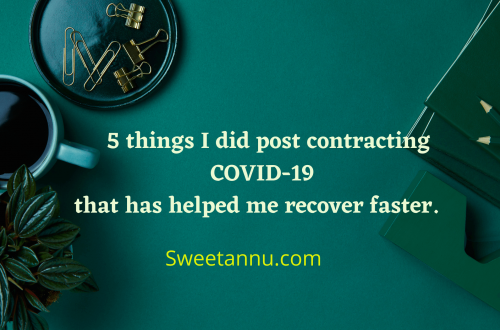
The ultimate guide to Indian Coffee

The ultimate guide to Indian coffee -n When you head to the South Indian states, you can hardly move for the number of businesses, farms, and people that form part of the country’s extensive coffee trade. Venture to Kerala, Karnataka or Tamil Nadu and you will be right in the heart of the coffee country, and you won’t struggle to find people willing to sell you a fresh brew and tell you the story of the coffee’s journey from mud to mug.
Estimates suggest that as many as a quarter of a million people in the country work directly as coffee growers, while millions upon millions are employed up and down the rest of the supply chain. And, while the country’s population of 1.25 billion may make these numbers look slightly insignificant, it is worth highlighting that 250,000 people are the equivalent of the population of Nottingham (UK), Angarsk (Russia), or Porto (Portugal).
While most coffee beans globally are grown in direct sunlight, those that are grown in India tend to be grown in the shade and thrive in monsoon conditions. Indian coffee beans are, for this reason, incredibly distinctive in both colour and flavour, but for those that prefer their coffee grown in shade, Indian coffee is widely regarded as the best in the world.
Despite the fact that the coffee industry in the south of India plays such a crucial role in any number of local economies, it is very interesting to note that the coffee that emanates from this region only accounts for around 5% of the total global production, which really showcases just how much coffee is consumed each and every day around the world.

Where does the coffee end up?
Indian coffee, to a large extent, ends up in the coffee cups of people that live outside of India’s borders. Around 80 percent of the coffee grown in the country is exported, with the vast majority ending up in Germany, Belgium, France, and Japan. It is especially popular in Europe because the taste is far less acidic than most traditional coffee beans that come from countries such as Brazil, Peru, and Kenya. This means that the beans tend to be sweeter, and they tend to work better with drinks that contain milk or sugar, as is popular in northern European countries especially.
Want to visit?

So, if you are now considering visiting the region so that you can get a glimpse of the extensive growing fields first-hand, want to try some of the coffee close to the source, or simply fancy adding a quick tour of some of the South Indian states to your holiday itinerary, what should you do next?
1. Speak to the locals
Nobody will be able to give you a better understanding of how the coffee trade works, why it originated, and what is likely to happen in the future, than speaking to local people. Farmers, coffee shop workers, and restaurant owners are all people that you should engage with if you want to learn a little bit more.
2. Get to work!
If you want to gain true first-hand experience, why not head to a coffee plantation and get picking some beans yourself? Many tours will offer the opportunity to do this, or you can simply enquire yourself at a site of your choosing.
3. Understand the sustainability element

Many of the coffee farms in India are designed with sustainability in mind. If you want to learn more about how eco-friendly the growing, picking, washing and selling process can be, this is certainly something that can be achieved.
4. Do some tastings
Of course, if you’re on a coffee tour, the one thing you probably want to do more than anything else tastes the various types of bean, get a better understanding of why particular coffees taste the way they do, and then perhaps even purchase some of your favorite blends.
Many of the coffee plantations give specialized tours to visitors

The ones in Munnar are particularly spectacular if you happen to be that way – but it is advised that you book well in advance, and check with your chosen tour before you travel to ensure they can recall your booking!
Or, alternatively, let an expert tour guide company handle all of the booking and logistics on your behalf, giving you the freedom to sit back, relax, and sip on some of the world’s tastiest coffee! Truly the ultimate guide to Indian coffee.
People also read – How to make a perfect cup of Tea.







16 Comments
Mayuri Nidigallu
This is truly the ultimate guide to Indian Coffee. A must read for coffee lovers!
Surbhi Prapanna
I agree talk to local people always help in learning a lot about the exact process and minute details . with this info we get to know the practical side. i really liked the post and you had shared a proper detail and cover all the points about Indian coffee.
Alpana
I am a big coffee lover. Talking to locals always helps in understanding the insights. Same goes for coffee. Every place has a distinctive coffee flavor. And talking about locals about it will help in finding the best quality.
Pragnya Mishra
Experience in the coffee estate walk around, night stay and tasting coffee, I had all years ago. I never spoke to locals expect the guide there, maybe next time I would put that effort too. I loved readingthis post Anahita.
Cindy Dsilva
Wow my mom would probably love this. She is a coffee freak and im the total opposite of that.
Ruchi Verma
This must be a great experience for every coffee lover …I really loved the way you shared this!!
MeenalSonal
All the pointers of the post are making to have one cup of coffee.
snigdha
This is a must read for coffee lovers. You have covered all the thing related to Indian coffee.
Rashmi Singh
Wow great post for coffee lovers and you covered all the points about indian coffee. Loved the post.
Anahita Irani
THank you so much
Jhilmil Bhansali
When we went to Kerala 2 years back, we did a coffee plantation visit along with tastings. The raw flavour was so different from the processes ones that we drink. And the raw cocoa has the real benefits.
Snehalata jain
I have been to coffee plantation in Kerala and have always enjoyed each n every story behind coffee and even loved eating raw n ripe coffee beans
Varsh
I didn’t know that Indian coffee is so popular in Europe. I’m sure those specialised coffee plantation tours and tastings would be fun!
Tina Basu
This is such a beautiful post on coffee. I am currently loving the white coffee.
Jhilmil D Saha
Wow this article is a delight for coffee lovers like me. Having visited a coffee plantation in Kerala, its do fascinating to see how things are done.
Upasana Sharma
I love it. Coffee is bae and loving it means a great time